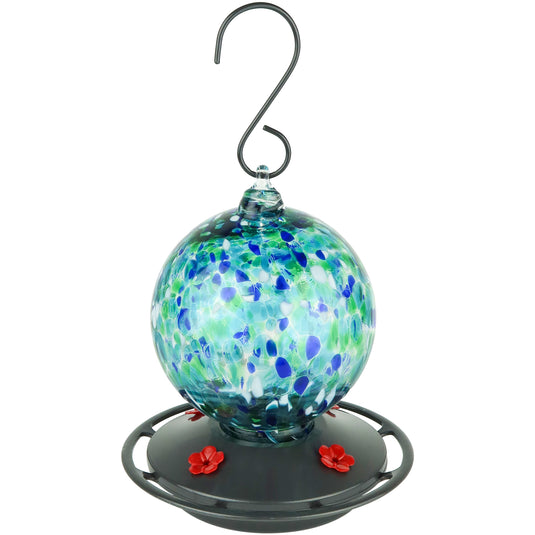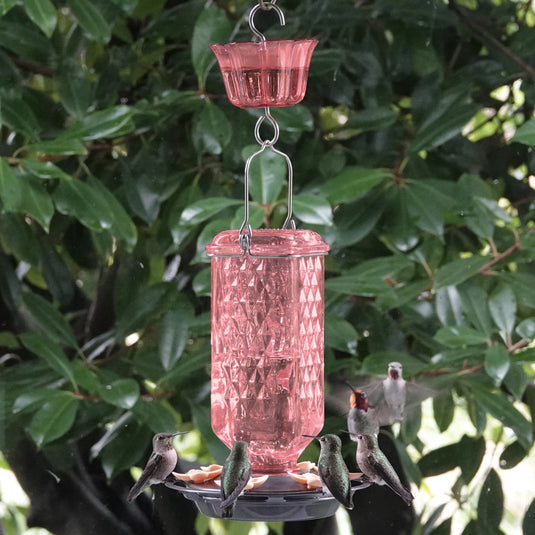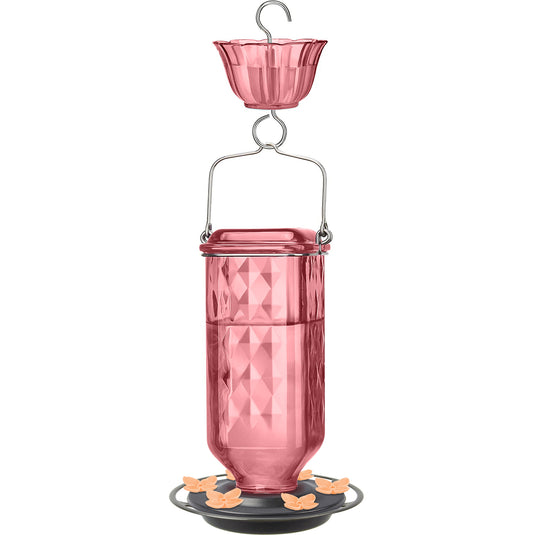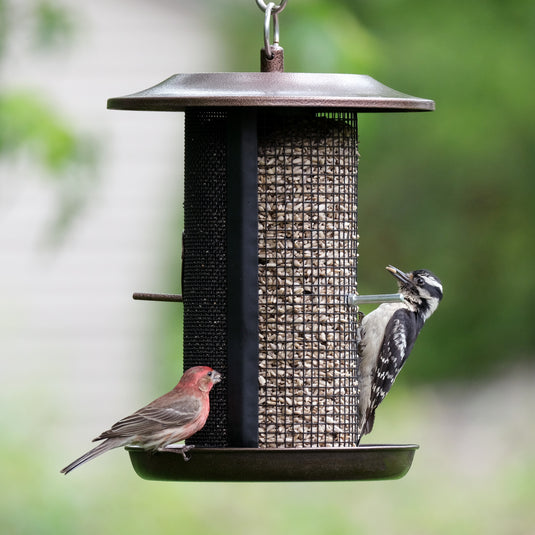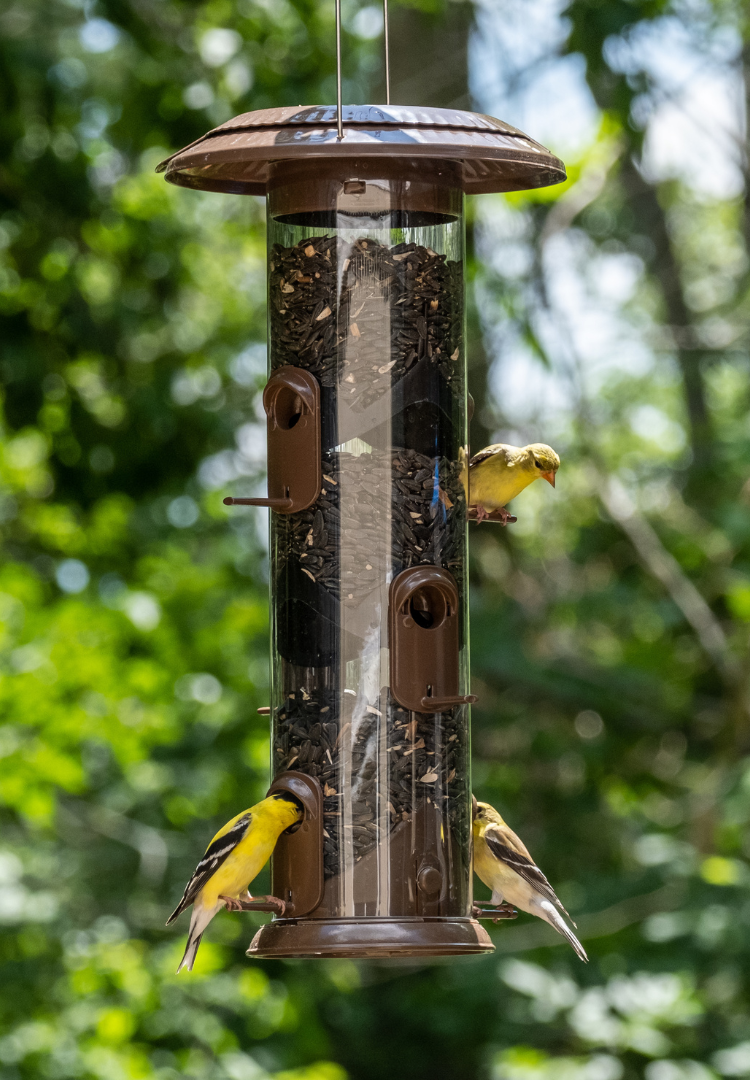Whether you’re just beginning or a seasoned birder, it can be challenging to know what type of seed to provide for your backyard birds. Is there a seed that nuisance birds don’t like? What if you want to attract more woodpeckers? Take a look at our bird seed guide to learn about each seed type, what birds they attract, and the types of bird feeders to use.
Black Oil Sunflower Seed
Striped Sunflower Seed
Safflower Seed
Nyjer/Thistle
Cracked Corn
Peanuts
Millet
Suet
Sunflower Seed
Black Oil Sunflower Seed
One of the most popular seed types amongst backyard birds is black oil sunflower seed. These large, thick seeds have a high-oil content and are loaded with protein, fiber, calcium, and more nutrient rich ingredients. The shell on black oil sunflower is thin, making it easy for most small-to-large seed eating birds to crack open and enjoy.

What birds like black oil sunflower seed: Finch, Cardinal, Chickadee, Dove, Grosbeak, Jay, Junco, Nuthatch, Siskin, Sparrow, Titmouse, Woodpecker
Best bird feeders to use with black oil sunflower seed: Platform, hopper, tube
Striped Sunflower Seed
Striped sunflower seed has a much thicker shell than black oil, making it harder for birds with smaller or weaker beaks to open. Birders might choose this seed if they prefer to feed larger birds only, or to keep away nuisance birds, like House Sparrows, starlings, and blackbirds.

What birds like striped sunflower seed: Cardinal, Chickadee, Grosbeak, Jay, Nuthatch, Titmouse
Best bird feeders to use with striped sunflower seed: Platform, hopper, tube
Safflower Seed
A favorite among cardinals, safflower is a thick-shelled seed that is high in protein and fat. Because of its thick shell, this seed type attracts a smaller amount of bird species but is said to detract nuisance birds like House Sparrows, starlings, and even pests like squirrels.

What birds like safflower seed: Cardinal, Chickadee, Dove, Grosbeak, Nuthatch
Best bird feeders to use with safflower seed: Platform, hopper, tube
Nyjer/Thistle
Nyjer seed (also referred to as Nyger or thistle), is a small, black seed high in oil content, making it an excellent source of energy for the birds who eat it. Many birders choose to offer Nyjer in their bird feeders throughout the winter months since many non-migratory birds feed on the nutritious seed.
Commonly mistaken as thistle, Nyjer is not derived from the same plant species as the noxious weed. Natively from Africa, the Guizotia abyssinica is an annual herb, grown for its edible oil and seed. To prevent the germination of Nyjer plant from birdseed, the USDA requires treatment in order to sterilize it before it can be sold and used to feed birds.

What birds like Nyjer/Thistle: Finch, Bunting, Chickadee, Dove, Junco, Siskin, Sparrow, Titmouse
Best bird feeders to use with Nyjer/Thistle: Mesh, sock, tube with thistle inserts as shown below
Cracked Corn
While low in oil content, cracked corn is an excellent source of protein and fiber to help round out a bird’s diet. It’s often included in seed blends to appeal to birds like cardinals, grosbeaks, and jays.

What birds like cracked corn: Cardinal, Dove, Grosbeak, Jay, Junco, Siskin, Sparrow, Titmouse
Best bird feeders to use with cracked corn: Platform, hopper, tube
Peanuts
Peanuts are naturally high in fat, making them a great source of energy and calories for birds. They can be offered shelled, which will appease smaller birds like chickadees and titmice, or offered whole in-shell, a favorite of larger birds like jays. Most medium and large-sized birds will eat peanuts, however, smaller birds like finches and will not. When offering peanuts to birds, make sure they are unsalted, unflavored, and uncoated – peanuts with any kind of seasoning can be dangerous for birds to ingest.

What birds like peanuts: Cardinal, Chickadee, Grosbeak, Jay, Junco, Nuthatch, Woodpecker
Best bird feeders to use with peanuts: Platform, hopper
Millet
White millet, also known as proso millet, is a small round seed preferred by ground-feeding birds like doves and sparrows. Slightly sweet and packed with protein, it’s a good choice for birders who want to increase the number of species of birds who visit their yards. Scatter it on the ground, along a hedge, or offer it in a tray feeder that has good drainage.

What birds like millet: Finch, Bunting, Cardinal, Dove, Jay, Junco, Siskin, Sparrow
Best bird feeders to use with millet: Platform
Suet
Although not a seed itself, suet comes in many different compositions, from plain fat to fruit, insect, seed, and nut blends. You can attract a wide range of birds with suet including Woodpeckers, Titmice, Chickadees and Nuthatches. Many birds that eat insects to round out their diets will eat suet in the winter months to fill the void when the insects they typically feed on are not plentiful.

What birds like suet: Finch, Bunting, Chickadee, Nuthatch, Siskin, Sparrow, Titmouse, Woodpecker
Best bird feeders to use with suet: Suet, hopper
How to attract specific birds to your yard
If you want to attract a specific type of bird to your yard using seed and feeders, take a look at this helpful guide from the Wild Bird Feeding Institute. After a four-year study, observational data was gathered which places a high, moderate, or low seed and feeder preference ranking to the most commonly abundant birds at bird feeders in the US and Canada. Use the chart to help you select the best seed and feeder to attract the bird species you want to your yard!
Keeping your bird feeder clean
Regardless of seed type offered, keeping your bird feeder clean is a critical step in keeping your backyard flock healthy and avoid spreading diseases among birds. Dirty feeders allow the seed to spoil and harbor mold and bacteria. Follow our recommendations to clean your bird feeders so you can attract more birds and keep them healthy!
Choosing a location for your bird feeder
Once you’ve selected your bird feeder and seed, choosing a location is an important factor in helping the birds find your yard. If you already own and are having success with other bird feeders, try placing the new feeder near the existing feeders. Place your feeder roughly 10 feet from a natural shelter such as trees or shrubs to offer a resting place for birds between feedings and quick refuge from any predators. Be careful not to put feeders much closer than 10 feet from trees or shrubs since it can increase the likelihood of squirrels. Remember, feeders should be hung or mounted closer than 3 feet from a window or farther than 15 feet from a window to help prevent fatal window collisions. Read our guide for more tips on attracting birds to a new seed feeder.
Providing water for birds
Don’t forget to provide a fresh source of water! All birds drink water and need to bathe regularly to keep their feathers clean. Providing a consistent source of clean and fresh water from a bird bath, fountain or a shallow pond will keep your backyard birds happy so they return regularly.







